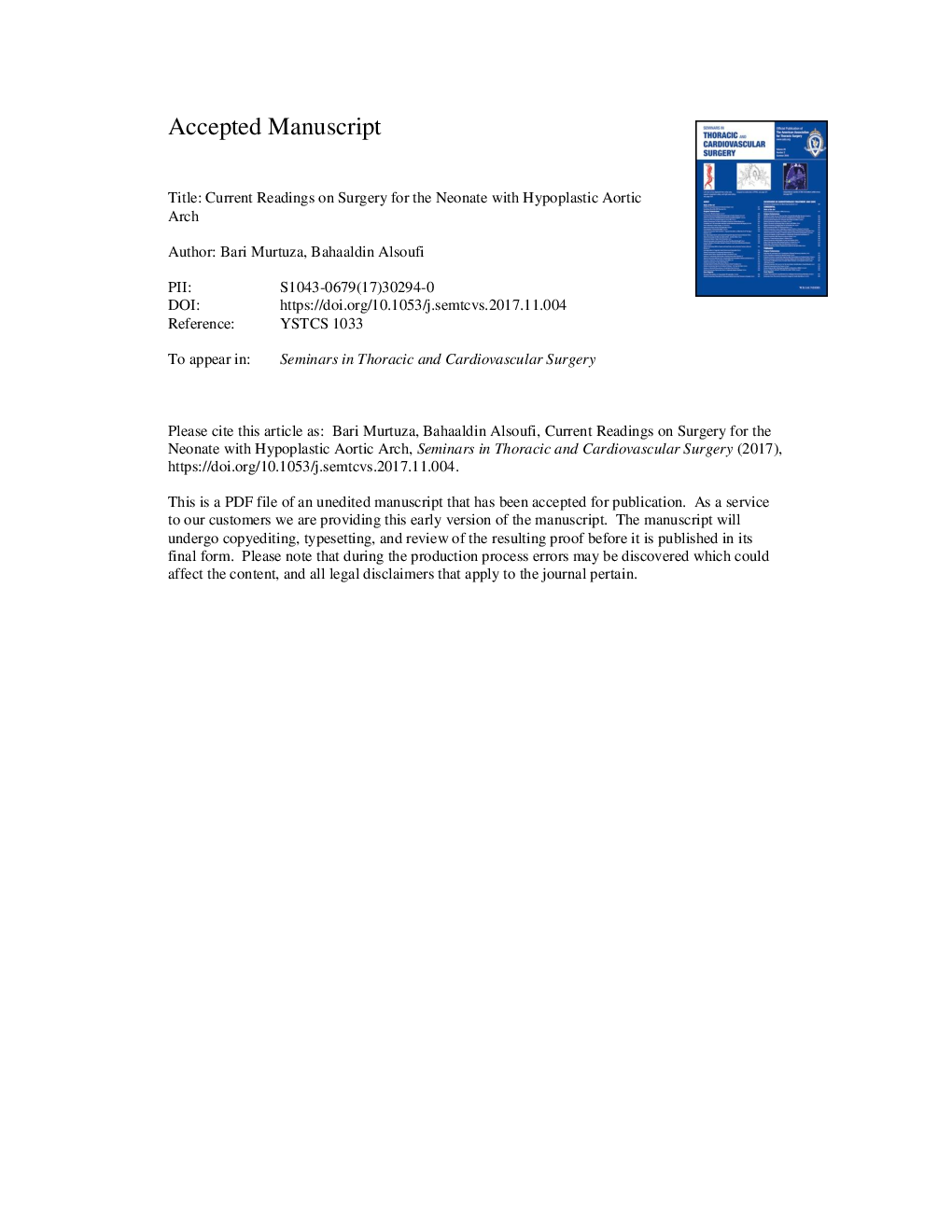| Article ID | Journal | Published Year | Pages | File Type |
|---|---|---|---|---|
| 8679116 | Seminars in Thoracic and Cardiovascular Surgery | 2017 | 18 Pages |
Abstract
Aortic arch hypoplasia is commonly present in neonates born with ductal-dependent coarctation of the aorta. The ideal surgical repair of neonates with proximal arch hypoplasia continues to be debated. Controversy exists about the fate of the hypoplastic proximal aortic arch following surgical repair and whether that will eventually grow to normal size upon relief of the distal obstruction or will persist as a residual lesion that can affect the long-term outlook of those patients. There is new evidence that residual proximal arch hypoplasia and the shape of the reconstructed arch both have an important impact on vascular remodeling and on the subsequent development of hypertension. Those concerns about late outcomes despite what was originally deemed a successful repair in infancy, coupled with improved cardiopulmonary bypass and cerebral perfusion techniques that allow surgeons to address proximal arch hypoplasia with low morbidity, have rekindled the debate on how to address proximal arch hypoplasia, with the aim to offer a neonatal surgery that would last for a lifetime and provide both optimal early recovery and late freedom from hypertension and related complications.
Related Topics
Health Sciences
Medicine and Dentistry
Cardiology and Cardiovascular Medicine
Authors
Bari MD PHD, Bahaaldin MD,
